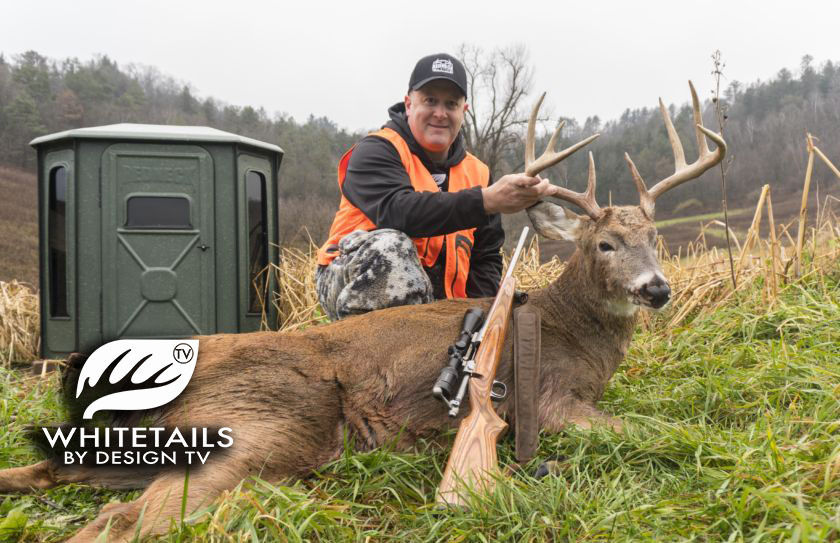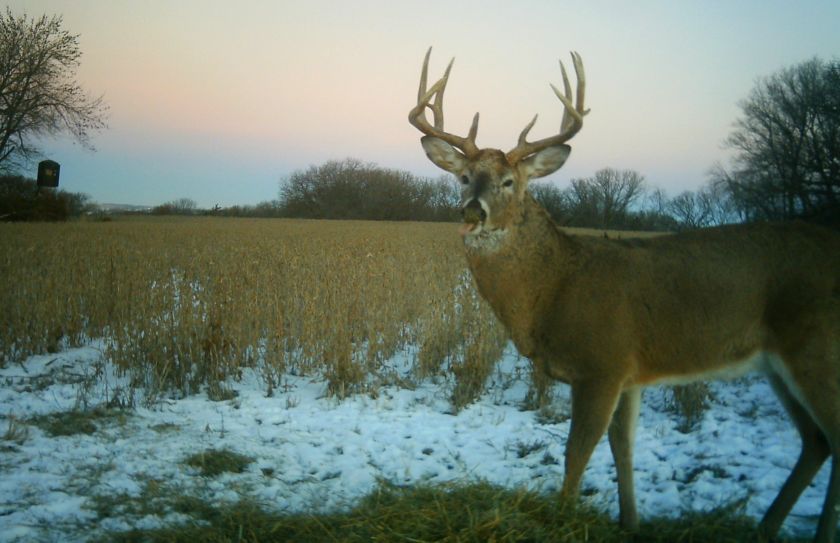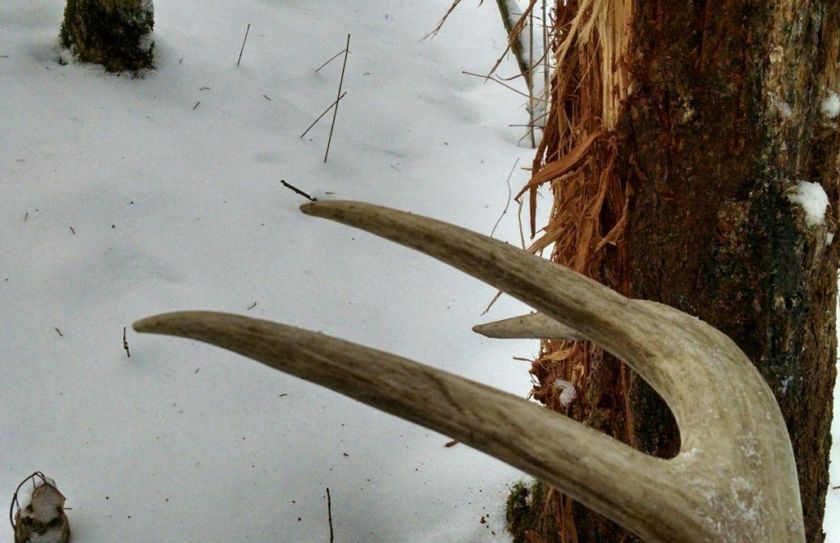With frigid temps and snow blanketing most of the Midwest, it’s safe to say that the late season is in full swing! If you still have a tag in your pocket that you’re hoping to fill, there are 6 key ingredients that can help you still find late season success. In all honestly, the preparation for a good season finale should have started well before the season even began. As the whitetail’s metabolism now becomes the most significant factor in daily movement, they truly do become slaves to their stomachs. In order to capitalize on a mature buck’s need to feed, you need to offer the buffet, and have a way to to hunt the cafeteria.
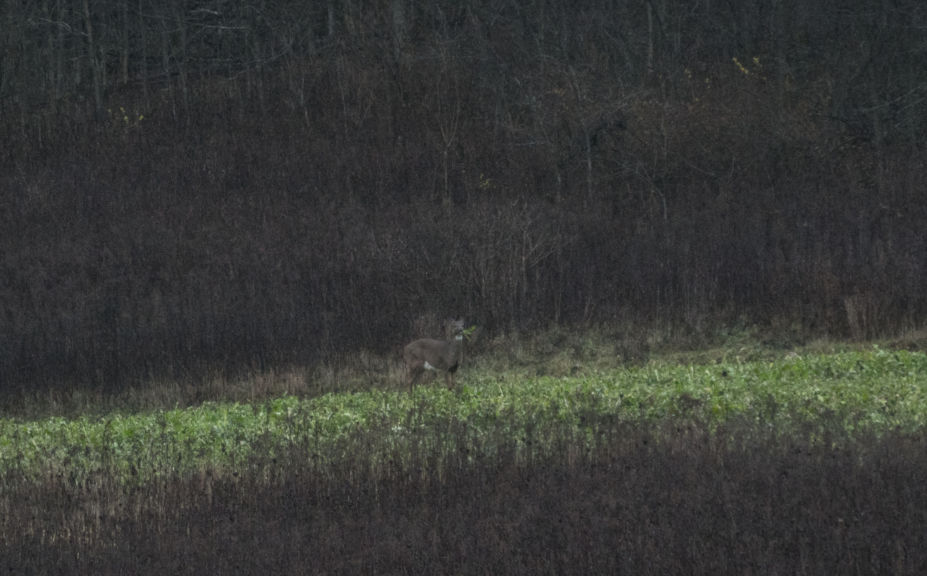
1. Fall Food
As the fall progresses, many food plots become completely worn out and unattractive to deer. Whether they’ve been overgrazed or are simply no longer preferred whitetail forage, these food plots hold no value during the late season. It’s important to consider the entirety of deer season when planting your food plots in the summer. Ideal full season food plots boast a diverse array of forage, and avoid monotone, single species plantings like corn or soybeans alone. A good late season food plot retains combinations of viable forage such as brassicas, soybeans, rye and corn.
2. Unpressured Food Sources
Offering food alone, is not enough! Deer have to feel safe and confident enough to graze in food sources during shooting hours. Towards the tail end of deer season, local herds have likely seen it all. Hunter access, trail camera checks and deer harvest recoveries that took place throughout the season have all influenced the deer behavior and willingness to feed or travel during daylight hours. If your efforts this fall were minimally invasive and your food plots were left uninterrupted by hunting or access, deer will likely still feel safe enough to use them before dark. These unpressured food sources are uncommon this late into the season, but can be a slam dunk if they are truly unpressured!
3. Unpressured Cover
When late season temperatures plummet, the value of unpressured bedding areas skyrockets. Deer make limited and calculated movements during the late season to help themselves conserve their energy. They will often utilize the same cover, bedding areas, travel corridors and food sources day after day if their daily cycle is uninterrupted. The importance of their daytime bedding areas cannot be understated. If deer have to waste their energy because they were bumped by human intrusion, they will find cover that gives them privacy and the ability to conserve energy by repeating a daily cycle without interference.
4. Low Impact Access
Late season hunting presents a greater challenge and need to enter stand locations covertly. Both sight and sound travel further with ease through the barren, foliage stripped woods. It is important to forbid your sight, sound, or scent from entering any bedding areas or food sources. After the hunt, avoid spooking deer from food sources, this will allow them to continue their daily cycle, and maintain an unpressured food source.
5. Hidden Stand or Blind Location
Yet another challenge that arises once the leaves have fallen... You may find that stands that previously offered plenty of cover, now leave you sticking out like a sore thumb! Ground blinds can offer a great alternative during the late season, but they should be brushed in and given time for the deer to become accustomed to them. Simply putting up a pop-up blind along the edge of a food plot can interrupt and in some cases end the daily food source cycle all together. It’s important that no matter where you hunt, you cannot be seen while entering or exiting the stand location.
6. Evening Hunts
Temperature is an extremely important factor to consider when planning your late season sits. Most days, the temperature will bottom out shortly after light, and peak in the late afternoon. Deer know, and plan for this! Morning movement in the late season can be extremely limited, because deer choose to bed and conserve their energy to feed during peak temperatures in the afternoons. So hunt the evenings, when deer are more likely to travel and feed. This will not only help you to focus on the time of day that deer are most likely to travel, but it will eliminate the chance to spook deer in the mornings, when most deer will be utilizing cover for bedding.
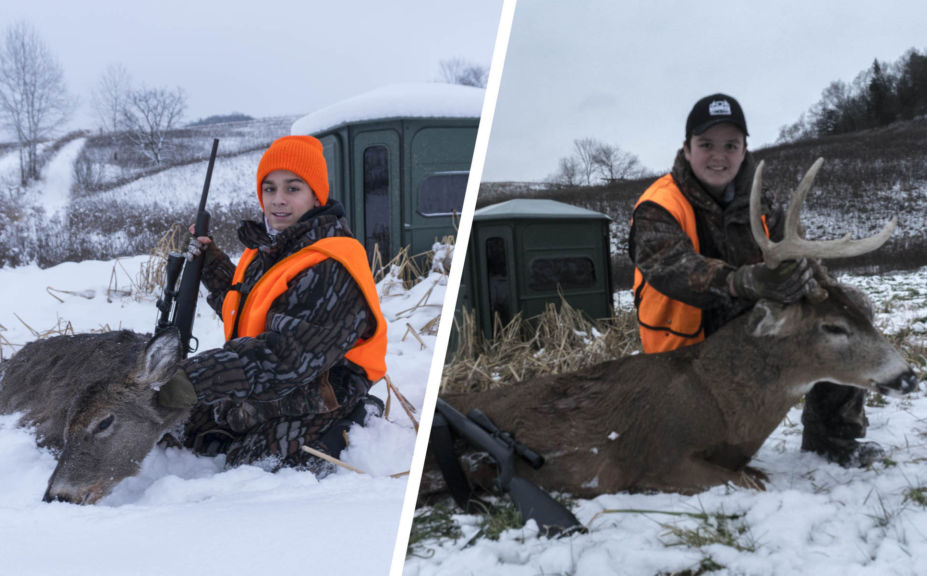
Conclusion
Jeff’s hunting lease is designed to promote and preserve the deer herd’s daily cycle from food sources to cover and bedding. He painstakingly plans each hunt’s entrance and exit throughout the fall to conserve and avoid disturbing his bedding areas and food sources. This fall, when the post rut wrapped up, and the daily deer movement cycle began to revolve solely around food and cover, he and his family capitalized. Jeff, his son Jake, and Dante all killed deer from the same Redneck blind, on the same food plot consisting of brassicas, rye, soybean, oats, and peas. Deer felt safe and confident traveling from the property’s cover to the food source each evening because until then, it was completely unpressured. An Exodus Lift Trail Camera set on Time-Lapse mode caught the deer’s feeding cycle each day, so Jeff knew when he and the boys could access the blind without being seen or heard.
If you have the food, the food is unpressured, and you have a way to access and hunt it, you too, can cash in on some of the most consistent and predictable deer movement of the season. The late season can offer numerous challenges, but your patience and persistence can pay off in big ways if these six ingredients are utilized!
By Dylan Lenz
